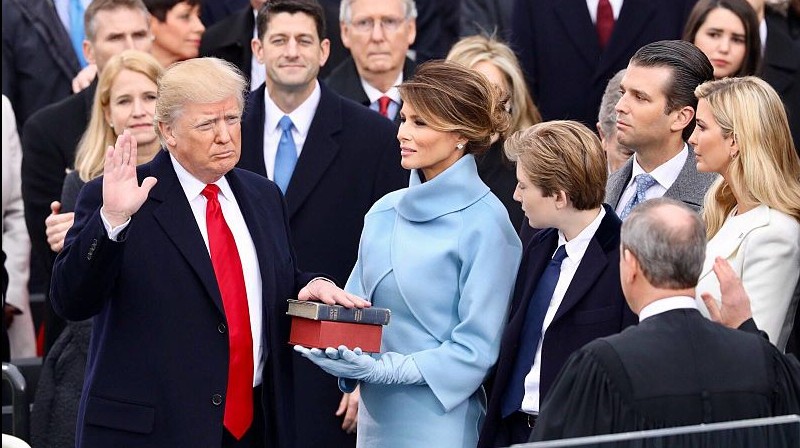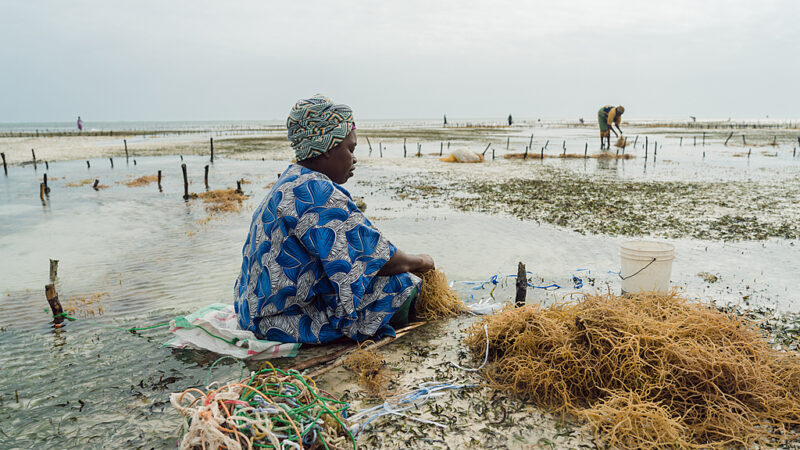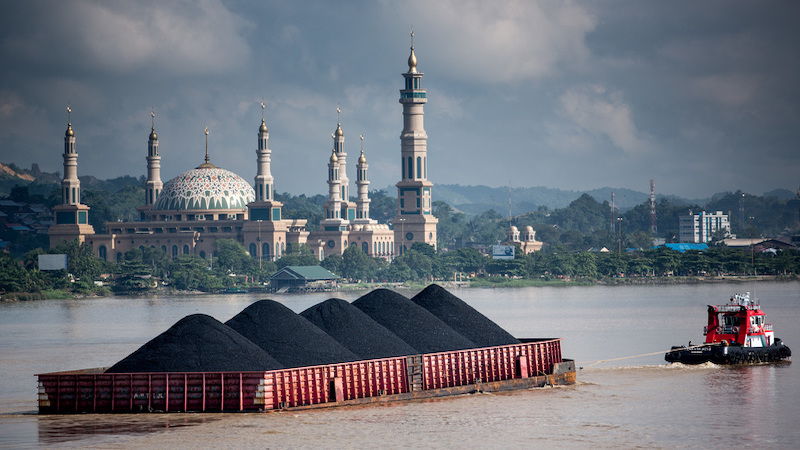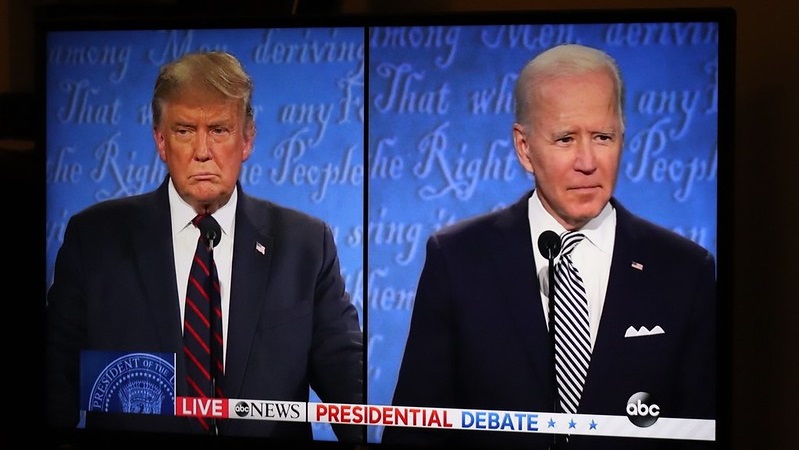The US election and negotiations on a new global finance target are the most important things for the climate in 2024
While 2023’s climate questions depended largely on governments and big bankers, 2024 is one of those years where the fate of the world rests in the hands of ordinary people.
But not all its people. Because of the USA’s huge emissions, financial power and electoral system, our hopes lie largely on those in a few swing states – like Pennsylvania, Wisconsin, Georgia and Arizona.
In 2020, we spoke to grassroots campaigners trying to boost climate voter turnout in Georgia. They were crucial in swinging the Senate then, which allowed a huge climate bill to be passed in 2022. The planet needs the likes of them again.
1.Who will win the US election?
Of all the world’s elections, the USA’s is the one that matters the most for the climate. The policies of the world’s second biggest polluter swing wildly depending on who is in the Oval Office.
The vote on November 5 is likely to pit Joe Biden against Donald Trump. Polls and bookmakers currently suggest Trump is more likely to win.
That would put a major dampener on climate hopes ahead of Cop29, on November 11.
We know where both men stand. As president, Trump withdrew the US from the Paris agreement. Biden re-joined it on his first day in office and pushed through $369bn of green spending.
On the same day as the Presidential election, Americans will also vote for all the seats in the House of Representatives and a third of those in the Senate.
Republican control of the House of Representatives is a big barrier to US climate finance. Given Democratic turnout is usually higher when there’s a Presidential election, there’s a chance Democrats could win control and at least deliver on their $3 billion promise to the Green Climate Fund.

Donald Trump being sworn in as US president in 2016 (Pic: White House photo)
2.What will the new global finance target be?
Compared to fossil fuels, finance was low profile in 2023 – to the anger of developing countries.
But 2024 should be its year, as countries have to negotiate a new finance goal for 2025 onwards by the time they leave Cop29 in Baku in November.
Expect debate over who should pay and who should receive, as well as how much should be given and to what.
Separately, France and Kenya have launched a taskforce on how to get money for climate which isn’t just from governments.
Options include taxes on international shipping, aviation, financial transactions and fossil fuels.
The US, Germany and others will continue their push to squeeze more money out of the World Bank and International Monetary Fund for climate.
3.Will emissions finally start going down?
Almost every year so far, the world’s humans have pumped out more greenhouse gas than any year before, sparking depressing headlines about “record emissions”.
But 2023 could well be the last year of this. A report by Climate Analytics finds a 70% chance that emissions will peak in 2023 and start falling in 2024.
The International Energy Agency thinks something similar – but the US government’s forecasters are more pessimistic.
Whether emissions peak or not, the amount of greenhouse gas in the atmosphere will keep going up. A bath tub doesn’t empty because you put less water in it each year – you have to pull the plug out.
![]()
Climate Analytics says emissions are likely to peak this year but how fast they decline depends on policies (Photos: Climate Analytics)
4.When will the loss and damage fund start spending?
Before rich nations agreed to a loss and damage fund at the end of 2022, they argued that it would take years and years to set up – too long to be useful.
After governments agreed on most of the details in 2023, 2024 may be the year they are proved wrong.
Regional groups are appointing their board members to the fund now.
Then the board needs to meet, agree policies, receive the money it’s been promised and start dishing it out.
What’s for sure is that there will be loss this year and there will be damage – droughts, heatwaves, storms and more. So the victims can’t wait.
5.Will countries firm up adaptation targets?
After two years of talks, at Cop28 this year governments agreed to draw up targets on adapting to climate change in areas like healthcare, food security and protecting nature.
They will now spend two years discussing whether there should be numbers attached to those targets and what those numbers should be.
Developing countries want the numbers – like a target to reduce adverse climate impacts on agricultural production by 50% by 2030.
But developed nations argue numbers can’t show how well you’ve adapted to climate change.
They will hash out this debate at Bonn in June and at Cop29 in Baku in November.

Seaweed farmers in Tanzania are having to move into deeper waters as seaweed-killing bacteria thrives in warming seas (Photo: Natalija Gormalova / Climate Visuals Countdown)
6.Will governments get rid of fossil fuel subsidies?
Since 2009, governments have kept promising to get rid of subsidies for fossil fuels – but not really doing so.
At Cop28, a dozen nations including France and Canada joined a coalition to try and finally turn this promise into action.
They committed to drawing up an inventory of their fossil fuel subsidies by Cop29 in November.
Inventories can lead to action. When a Dutch inventory revealed they were spending $40bn a year subsidising fossil fuels, protesters braved water cannons to block off the country’s parliament, rocketing the issue up the agenda. Will the same happen elsewhere?
7.Will coal-to-clean deals keep disappointing?
Just energy transition partnerships (Jetp) faced a brutal reality check in 2023, as investment blueprints were finally unveiled.
Rich countries are offering most of their money as loans not grants. Ambitious plans to switch off coal plants early in South Africa, Indonesia and Vietnam are now much more uncertain as a result.
As the money starts flowing in 2024, the implementation of the first few projects should give a flavour of how effective and just the transition will be.

The energy transition deal aims to wean Indonesia off coal, which now takes up nearly half of the country’s electricity mix. Photo: Kemal Jufri / Greenpeace
8.Will new treaty target plastic production?
Government negotiators are currently debating a draft of a new plastics treaty, which they hope to finalise by the end of 2024 – after meetings in Ottawa in April and Busan at the end of November.
One option being fiercely debated is whether to set limits on the amount of plastic each country can produce.
While the majority of European and African countries want limits, the US and Saudi Arabia are resistant.
Plastics are made from oil and gas. With electricity systems and vehicles transitioning to renewable electricity, oil and gas companies see plastics as a lifeline which this treaty could take away.
9.How will companies prepare for the EU’s carbon border tax?
Many developing countries have long seen the European Union’s carbon border tax and elements of
Read More

